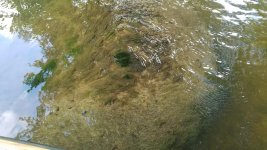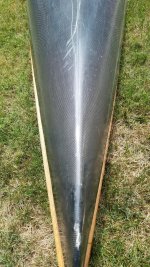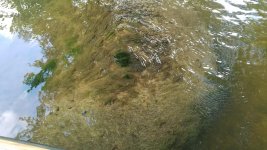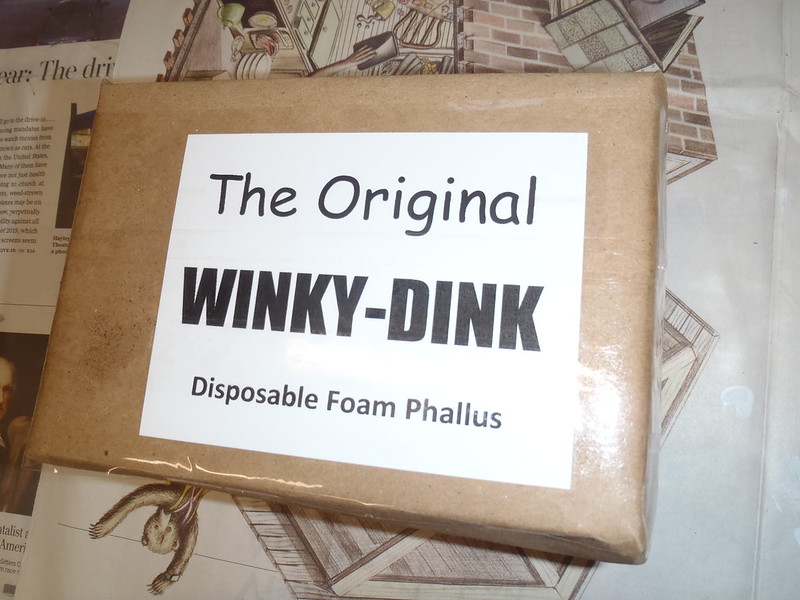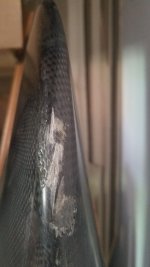- Joined
- Jun 22, 2017
- Messages
- 842
- Reaction score
- 322
So yesterday I ran my trusty Merlin II directly into a barely submerged boulder. I think I just need to sand the impact area a bit to make sure anything loose comes off and then repair with epoxy or clear gelcoat. I have some clear gelcoat on hand and epoxy is easy enough to get. If I use gelcoat should I just apply freehand and then smooth it out after hardening or try the Saran Wrap approach or maybe buy some of the peel/ply tape that someone posted about recently. Is there any reason to favor an epoxy repair over gelcoat? I like the way the epoxy repair came out on the Flashfire thread and we do have Saran Wrap in the house.
